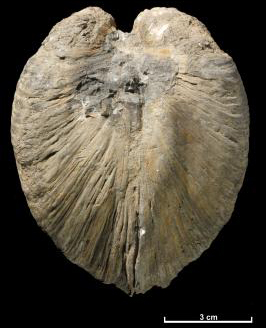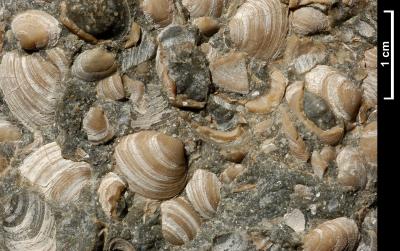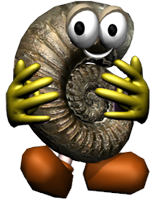Bivalves
Bivalves have inhabited the Earth for over 500 million years. They first appeared in the middle Cambrian, about 300 million years before the dinosaurs. They flourished in the Mesozoic and Cainozoic eras, and are abundant in modern seas and oceans; their shells litter beaches across the globe.
In life, bivalve shells are made from layers of crystals of the minerals calcite or aragonite. Fossil bivalves were formed when the sediment in which they were buried hardened into rock. Many closely resemble living forms which helps us to understand how they must have lived.


Bivalves have two hard, usually bowl-shaped, shells (called valves) enclosing the soft body. The valves are the parts usually found as fossils, but decay of the elastic hinge tissue that joins them means that they are rarely preserved together.
The inside surface of a bivalve shell is marked by the attachment areas of the muscles and ligament responsible for opening and closing the valves. These features, with the teeth and sockets of the hinge, are important for classification.
The strongly recurved form of the bivalve Gryphaea is popularly known as devil's toe-nail, and in the 17th and 18th centuries many people thought that its possession was believed to cure arthritis.
« Back 











